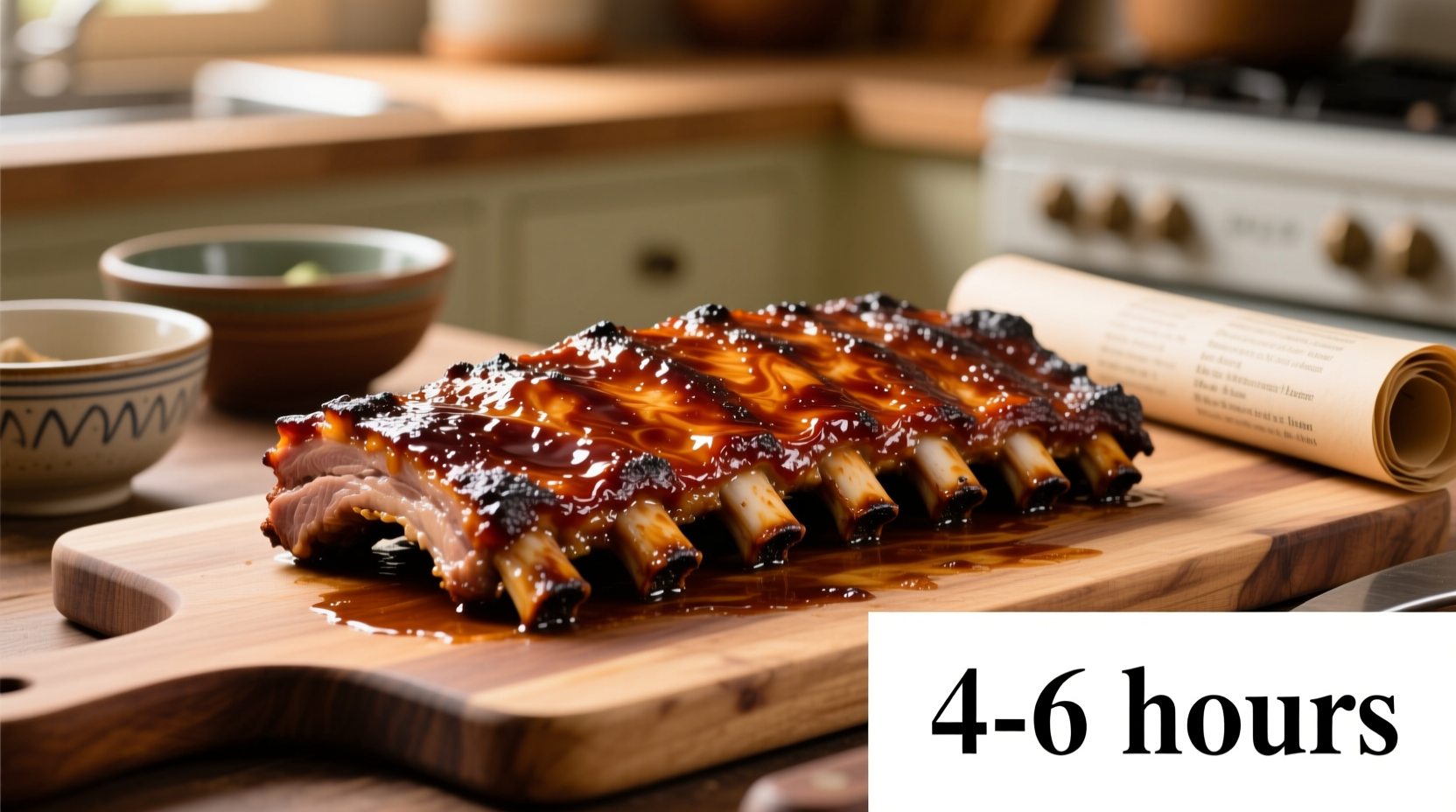Nothing beats the convenience and consistent results of slow cooking ribs. Whether you're preparing baby back ribs, spare ribs, or St. Louis style, understanding the precise timing and technique transforms this potentially tricky cut into a foolproof meal. Let's explore the science-backed method that guarantees tender, flavorful ribs every time.
Why Slow Cooking Works for Ribs
Slow cooking transforms tough connective tissues through controlled collagen breakdown. According to the USDA Food Safety and Inspection Service, pork ribs reach safe internal temperatures between 145-160°F (63-71°C), but the magic happens between 160-205°F when collagen converts to gelatin. This scientific process explains why timing matters more than temperature alone.
Preparation Essentials Before Cooking
Proper preparation sets the stage for success:
- Dry brine ribs with salt 12-24 hours before cooking
- Remove the membrane from the bone side for better texture
- Apply a thin layer of mustard before seasoning to help rub adhere
- Use room-temperature ribs for more even cooking

Step-by-Step Cooking Process
Follow this proven sequence for perfect ribs:
- Prep the slow cooker - Add 1 cup liquid (apple juice, broth, or water) to prevent scorching
- Arrange ribs - Stand ribs upright or coil them carefully to fit your pot
- Set temperature - LOW for 6-8 hours or HIGH for 3-4 hours (never exceed 8 hours on LOW)
- Check periodically - After 5 hours on LOW or 2.5 hours on HIGH
- Finish properly - Transfer to baking sheet, glaze, and broil for 3-5 minutes
Temperature and Timing Relationship
| Rib Type | Thickness | LOW Setting | HIGH Setting | Internal Temp |
|---|---|---|---|---|
| Baby Back | 1-1.5 inches | 5-6 hours | 2.5-3 hours | 195-203°F |
| Spare Ribs | 1.5-2 inches | 7-8 hours | 3.5-4 hours | 200-205°F |
| St. Louis Style | 1.5 inches | 6-7 hours | 3-3.5 hours | 198-203°F |
How to Tell When Ribs Are Perfectly Cooked
Don't rely solely on time—use these visual and tactile indicators:
- Bend test: Grab ribs with tongs; they should bend easily and cracks appear in the surface
- Meat retraction: Bones should protrude 1/2 inch from the end
- Fork tenderness: Meat should separate easily but not fall completely off the bone
- Internal temperature: 195-205°F (90-96°C) for optimal tenderness
According to research from the American Meat Science Association, the ideal tenderness window occurs when connective tissues fully convert to gelatin without excessive moisture loss. This precise balance explains why timing varies based on rib cut and slow cooker model.
Troubleshooting Common Issues
Solve these frequent problems:
- Dry ribs: Usually caused by overcooking or insufficient liquid. Solution: Reduce time by 30-60 minutes next time
- Tough ribs: Indicates undercooking. Solution: Continue cooking in 30-minute increments until tender
- Burnt bottom: Caused by too little liquid. Solution: Always add minimum 1 cup liquid and check periodically
- Uneven cooking: Results from overcrowding. Solution: Cook in single layer with space between ribs
Serving and Finishing Techniques
Elevate your slow-cooked ribs with these professional tips:
- Rest ribs for 15 minutes before glazing to retain juices
- Apply sauce during the last 30 minutes of cooking or after broiling
- For restaurant-quality finish, broil for 3-5 minutes after glazing
- Serve with complementary sides like coleslaw and cornbread
Frequently Asked Questions
Can I cook frozen ribs in a slow cooker?
No, cooking frozen ribs is unsafe as they spend too long in the temperature danger zone (40-140°F). Always thaw ribs completely in the refrigerator before slow cooking to ensure food safety and even cooking.
Should I add liquid to the slow cooker when making ribs?
Yes, always add at least 1 cup of liquid (apple juice, broth, or water) to create steam and prevent scorching. The liquid doesn't submerge the ribs but creates the moist environment needed for proper collagen breakdown without drying out the meat.
How do I prevent ribs from becoming too mushy?
Avoid cooking beyond 8 hours on LOW or 4 hours on HIGH. Check tenderness starting at 5 hours on LOW setting. The bend test is more reliable than strict timing—when ribs bend easily and show surface cracks but don't fall completely off the bone, they're perfectly cooked.
Can I use a slow cooker liner with ribs?
Yes, but with caution. Liners can trap steam and create slightly different cooking conditions. If using a liner, reduce cooking time by 30-60 minutes and check for doneness earlier than usual. Never use liners with acidic ingredients like tomato-based sauces as they may interact with the plastic.
Do I need to flip ribs during slow cooking?
No flipping is necessary. The moist, consistent heat of a slow cooker cooks ribs evenly from all sides. Standing ribs upright or arranging them in a coil ensures even exposure to heat. Flipping could damage the delicate meat structure as collagen breaks down.











 浙公网安备
33010002000092号
浙公网安备
33010002000092号 浙B2-20120091-4
浙B2-20120091-4